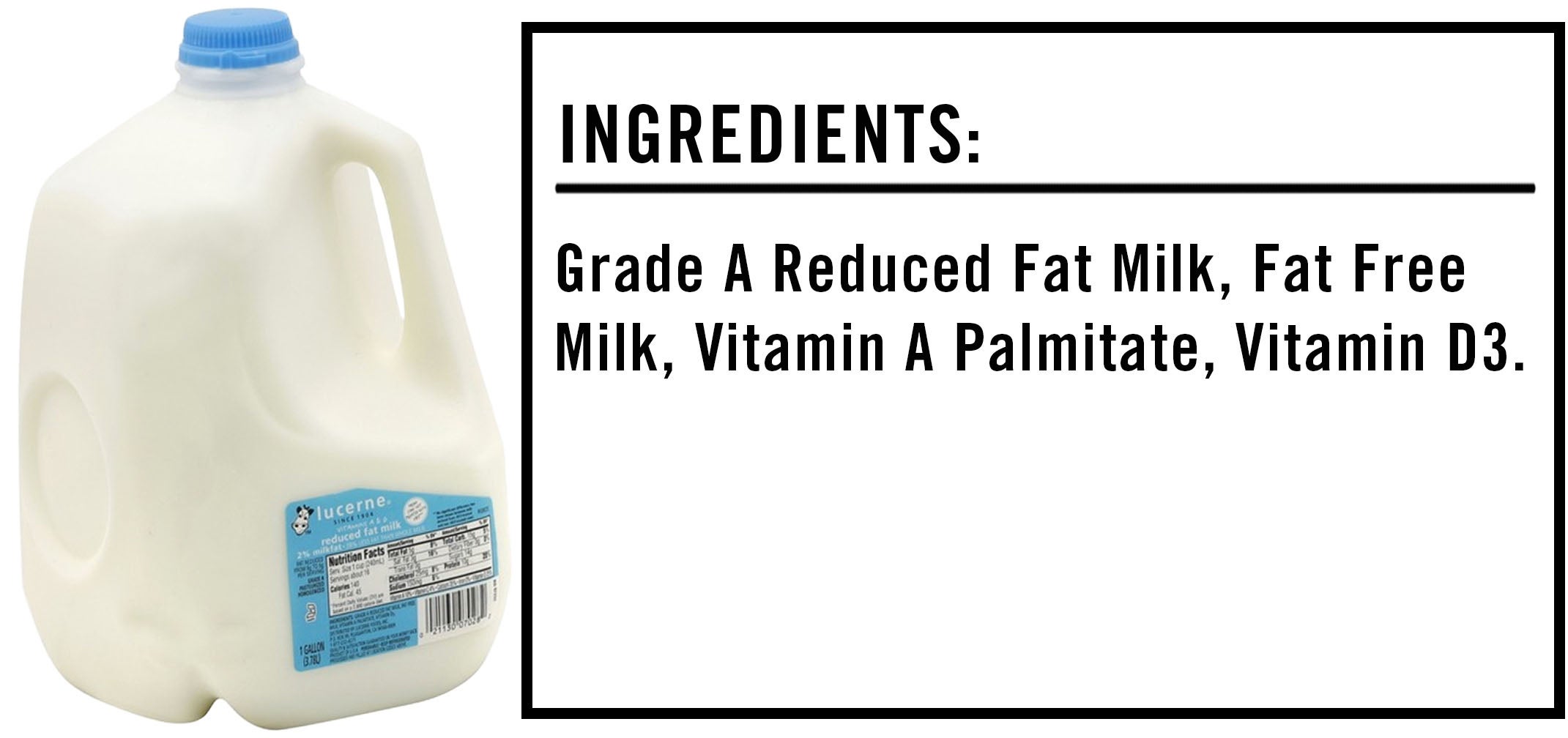We’re often told that you should never eat anything (or put anything on your body) if you don’t recognize everything on the ingredients list. But since most of us have no idea what xanthan gum or potassium benzoate are — or more importantly, what they’re doing to our bodies — we’re decoding the ingredients in the many things Americans put in (and on) themselves with the help of an expert.
This edition: Lucerne Two Percent Reduced Fat Milk, which, weirdly, is made from four separate ingredients that we’ve broken down in the exact order they appear online.

The Ingredients
1) Grade A Reduced Fat Milk: An eight-ounce glass of milk labeled as reduced fat — which means the milkfat content is two percent of the total weight of the milk — contains five grams of fat, whereas whole milk contains eight grams of fat. Additionally, Grade “A” refers to milk produced under sufficiently sanitary conditions, which qualify the product for consumption as a beverage, as opposed to consumption in the form of cheese, butter and other milk-based byproducts. These conditions are set by the Food and Drug Administration in the form of a 447-page Pasteurized Milk Ordinance.
2) Fat Free Milk: This ingredient has another name: Skim milk.
3) Vitamin A Palmitate: This is a compound that acts as a source of vitamin A, which supports vision and the immune system. Vitamin A is naturally abundant in milkfat; however, the skimming process implemented to create reduced fat milk results in the loss of vitamin A, which is why manufactures add it back in as vitamin A palmitate.
4) Vitamin D3: The dairy industry first began adding vitamin D to milk during the 1930s in an attempt to combat the rickets epidemic — rickets is a childhood bone disorder that results from a deficiency in vitamin D, something that many children experienced during the early 1900s as a result of child labor. (Our bodies naturally synthesize vitamin D when exposed to the sun, which was hard for children to come by when their days were spent deep within a factory.)
For the record, Vitamin D is a beneficial addition to milk: It helps our bodies absorb calcium, and studies show that a vitamin D deficiency can reduce testosterone levels and motivate early-onset erectile dysfunction, meaning milk might not be a bad choice if you can’t get it up.
The Takeaway
This milk might seem relatively harmless — especially considering the addition of vitamins — but Dana Hunnes, senior dietitian at the Ronald Reagan UCLA Medical Center, has told me time and again that non-skim milk contains high levels of saturated fat (which may be linked to heart disease) and the potentially tumor-growing animal protein casein.
“We’re the only mammals on Earth who drink the milk of another species willingly, knowingly and truly without reason,” she argues. “No other mammal on Earth drinks milk after weaning, and the main reason people are told to consume milk is for calcium, vitamin D and other trace minerals that we can now get from numerous plant-based sources.”

